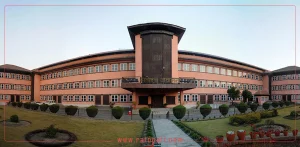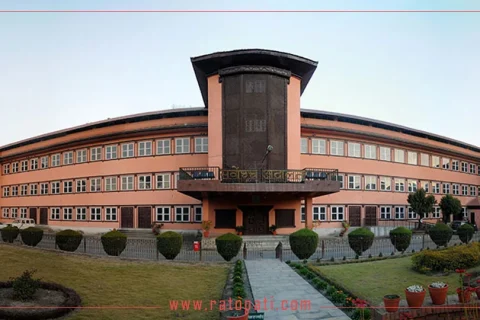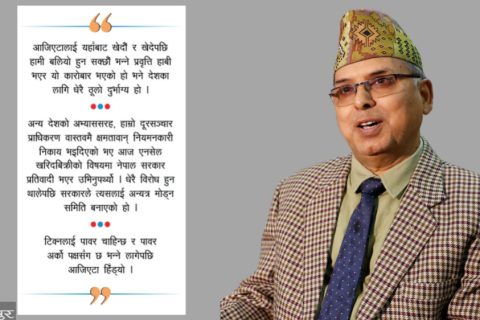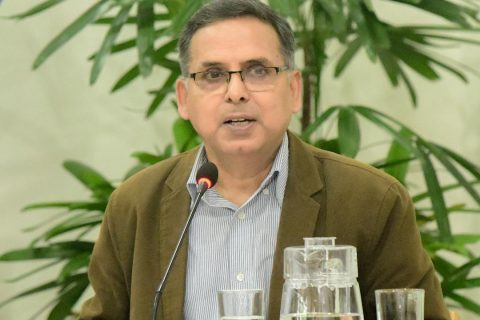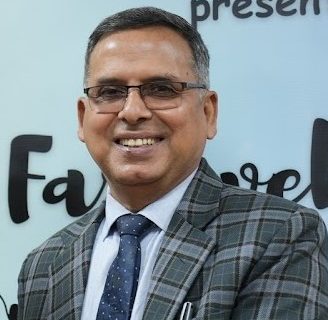Thirteen years ago on this day Nepal was reborn.
When Nepalis woke up on May 29, 2008, Nepal had become a republic. Late on May 28 night, the first meeting of the Constituent Assembly had voted to declare Nepal a fully federal democratic republic, ending the 240-year-old monarchy.
The constitution that was adopted on September 20, 2015 then formally institutionalised the declaration. The monarchy was consigned to history. The constitution envisioned a president as the head of state.
It was a massive political transformation the country had seen after the decades-long bloody war that killed 13,000 people and left thousands injured and disappeared.
Celebrations erupted across the country, and one thing that made Nepalis excited about was—the days of hereditary rulers, the monarchs, were gone… people’s sons and daughters would take the highest position in the country.
A little over a decade, Nepal still is a fledgling republic. The current President, Bidya Devi Bhandari, is the second, after she succeeded Ram Baran Yadav who had a seven-year tenure.
The constitution envisions the President as the protector of the constitution.
As the country marks the 14th Republic Day, questions, however, are being asked if President Bhandari has indeed played the role of the custodian and protector of the constitution in a true sense.
“The President instead has emerged as the biggest threat to the constitution that institutionalised republicanism, along with federalism and secularism,” said Dinesh Tripathi, a senior advocate who specialises in constitutional law. “This is very unfortunate.”
The Constituent Assembly that declared Nepal a federal republic was elected in April 2008 with the mandate to draw up a new constitution within four years. But continued wrangling among political parties led to its dissolution in 2012.
The Second Constituent Assembly was elected in 2013. Elections were overseen by a non-political prime minister, Khil Raj Regmi, who was the sitting chief justice then. As parties continued in their game of brinkmanship, chances of the second assembly delivering a constitution were diminishing.
But the April-May 2015 earthquakes somehow became the cause for politicians to make a push for the constitution. KP Sharma Oli, the chair of the CPN-UML, which was the second largest force in the assembly, was at the forefront of bringing together parties to rush the constitution amid protests in the plains and Madhes-based parties’ opposition.
A month after the constitution was promulgated, Oli became prime minister on October 12, 2015. On October 29, Bhandari was elected President.
Oli stepped down as prime minister in July 2016, but returned to power in February 2018. He had a strong mandate to govern for a full term. The drafters of the constitution claimed that they had given the country the “best constitution in the world”. They claimed they had drawn up every article so carefully that Nepal was out of the vicious cycle of political instability.
The expectations, however, were short-lived.
Oli demonstrated his authoritarian impulses right from the start. Bhandari would not bat an eye. The biggest assault the duo made on the constitution was on December 20, 2020 when Oli, despite leading a majority government, dissolved the House, and Bhandari obliged. Experts on constitutional matters vociferously criticised the President for rubber-stamping Oli’s every decision—even unconstitutional—refusing to invoke her conscience even once.
However, those who defended the President’s approval of Oli’s House dissolution as her duty as the constitutional head of state, said she had no option but to abide by the decisions made by the executive.
The Office of the President, however, had become an object of censure in the past too. Bhandari’s unwarranted interests in petty party politics, especially when Oli fell in trouble within his party, had raised quite an eyebrow. The media, civil society and analysts had warned about the hallowed institute, the symbol of republicanism, earning disrepute because of the person who helmed it.
Oli’s December 20 decision to dissolve the House was overturned by the Supreme Court on February 23. But Oli once again, on May 21, dissolved the House.
Bhandari worked extra hours, until late in the night. The Office of the President released a statement at 1:49am on May 22, announcing the House dissolution and declaring snap polls on November 12 and November 19.
Daman Nath Dhungana, a former House Speaker who was at the forefront of the 2006 people’s movement, which ultimately led to the election of the Constituent Assembly in 2008 and declaration of Nepal as a republic, said republicanism and constitutionalism at present are under threat from those who are supposed to protect those hard-earned gains.
“The constitution is facing danger from the present government and the President,” Dhungana told the Post. “The first step to save it is restoring the House and electing a government which has the trust of the restored House.”
The recent House dissolution too has been challenged in the Supreme Court. As many as 30 petitions have been registered demanding a restoration of the House. The Constitutional Bench led by Chief Justice Cholendra Shumsher Rana started hearing the petitions on Friday.
The Office of the President has been named as one of the defendants.
Analysts say when the Office of the President is constantly dragged into court, accusing it of making unconstitutional moves, it constitutes signs that something is seriously wrong.
According to experts, Bhandari’s endorsement of the December 20 House dissolution could be justified as her constitutionally mandated duty in the capacity of the head of state, but this time around, she has gone beyond her brief. A couple of steps she made before the House dissolution were also unconstitutional, experts say.
Before Oli recommended House dissolution, he had laid claim to a new government even though a day before he had proclaimed he did not have the numbers to win a vote of confidence in the House. Nepali Congress’ Sher Bahadur Deuba too had made a claim for the prime ministerial post, saying he had the backing of 149 lawmakers.
The claims were made as per the President’s call to form a government under Article 76 (5). She refused to recognise both the claims made by Oli and Deuba.
After failing to get reappointed as prime minister, Oli, who had been appointed a week ago on May 13 despite losing a confidence vote in the House, dissolved the Parliament.
Reappointment of Oli as prime minister on May 13 under Article 76 (3) itself was unconstitutional, experts say, as the constitution does not envision the same person as prime minister under different articles. Earlier in February 2018 and May 2018, Article 76 (2) and Article 76 (1) had already been used up to appoint Oli prime minister.
Experts say Bhandari failed to follow the letter and spirit of the constitution which elected her to the top post, and acted like an aide to Oli rather than the head of state.
As the country marks the 13th Republic Day, it must be observed with a renewed solemnpledge to safeguard the top law of the country, analysts say. Post File Photo
When the constitution was promulgated, one major question it faced was whether it had wider acceptability. Calls for constitutional amendments have not died down yet. However, elections in 2017 installed three tiers of the government. A strong government in Kathmandu and seven governments in provinces, with local federal units getting people’s representatives after almost two decades, inspired hopes.
There were expectations that Oli as prime minister would help implement the constitution and Bhandari as the President would safeguard it from any harm.
Instead, Bhandari, analysts say, worked hand-in-glove with Oli to weaken the constitution, making it more vulnerable.
“The frequent attacks on the constitution and political system by Oli have definitely impaired the constitution,” said Vijay Kant Karna, a professor of political science at the Tribhuvan University. “Oli was never checked for his unconstitutional moves. The President always stood by him and seconded him. A weakened constitution is exposed to more threats now.”
According to him, Oli should have stepped down long ago, the day when the court overturned his December House dissolution, on moral grounds.
But not only did he continue, he twisted the constitutional provisions and went on to recommend invocation of Article 76 (5), not letting the constitution take its own course.
Experts say Article 76 (5) needs to be invoked by the President when a prime minister appointed under Article 76 (3) fails a confidence vote. On top of that, the President also made a blunder by dissolving the House, without letting Article 76 (5) come into play, according to them.
“When people elect their representatives, they put faith in them and expect them to protect and implement the law of the land,” Mohan Lal Acharya, a constitutional lawyer, told the Post. “If those in power are bent on tearing the constitution apart for their petty interests, relieving them of their positions is the only solution. The constitution belongs to the sovereign people.”
Despite making a great leap forward by transitioning into a republic, Nepal has woefully failed in building strong institutions which are the major pillars of democracy, republicanism and constitutionalism. Instead, blatant attacks on the constitution by the two top institutions—the executive and the President—have stoked concerns that the republican set-up itself is in danger.
Experts say every assault on the constitution is an assault on republicanism, and what is even more unfortunate is that such attacks are being perpetrated by those who are elected to protect it.
“Oli’s hunger for power led to unconstitutional dissolution of the House twice,” Bipin Adhikari, former dean of Kathmandu University School of Law, told the Post. “Oli’s stubbornness has created a fear that peaceful handover of power, as envisioned by the constitution, might be difficult even in the future.”
According to Adhikari, frequent attacks on the constitution are signs that the political leadership’s commitment to democratic principles is fading.
As the country marks the 14th Republic Day, it must be observed with a renewed solemn pledge to safeguard the top law of the country, analysts say.
“The President may not have executive powers, but nothing bars her from holding consultations with cross-party politicians and experts before taking any decisions that can have a long-term impact,” Chandra Kant Gyawali, a senior advocate with a specialisation in constitutional law, told the Post. “She can draw the attention of the executive to her concerns and request to revisit its decisions if they contradict the constitution. She should not only be taking impartial decisions, she should also be seen as taking impartial decisions.”


